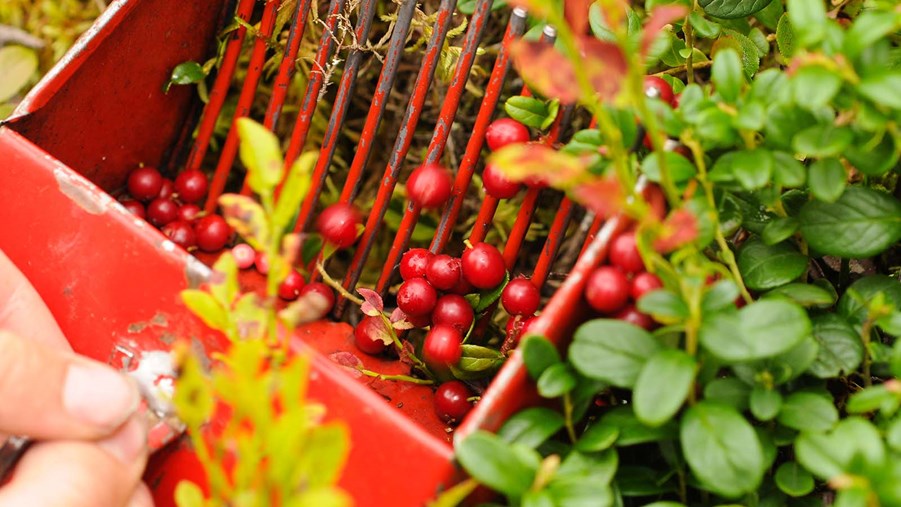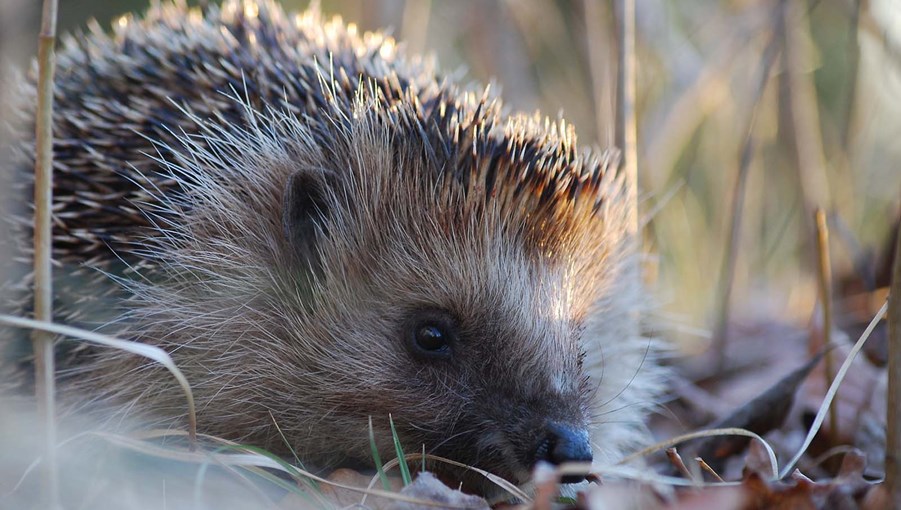The forest must be managed so that all forest species can survive. Conditions for improved biodiversity in the forest have improved in the past 20 to 30 years. But there is more to do. Read more about how the forest industry manages biodiversity, who bears the responsibility for forest biodiversity and what the Red List means.
Biodiversity in the forest
-
The Convention on Biological Diversity defines biodiversity as:
”The variability among living organisms from all sources including, inter alia, terrestrial, marine and other aquatic ecosystems and the ecological complexes of which they are a part; this includes diversity within species, between species and of ecosystems.” Biodiversity is not only about the number of species, but also the variation within species and between different environments.Biodiversity is the product of millions of years of evolution and adaptation to changing environments, an adaptation that is continuously ongoing. Maintaining diversity is a prerequisite for nature to continue delivering the ecosystem services we humans need.
-
The best thing would be to assess biodiversity by counting all species in the forest. But that’s impossible to do, of course. Instead, scientists look at the structures and environments that different species require, and how these develop. It then becomes clear that the condition of biodiversity in forests has improved over the past 30 years. As an example, the amount of deadwood and the proportion of old-growth forest has increased 80 per cent on managed forest lands. The amount of thick hardwood trees has also tripled, and cleared areas are smaller than they were 30 years ago.
-
Biodiversity is a prerequisite for viable, healthy forests that are well equipped to deal with climate change and extreme weather conditions. The Swedish forest industry’s fundamental principle is that the forest should be managed in a way that increases both growth and biodiversity. To safeguard and develop biodiversity, the forest industry works proactively with research and through collaborations with a variety of actors, in its own forests and by advising private forest owners.
-
Forests and the condition of forest biodiversity differ in different parts of the country. This is why forest management is done differently in the north and south.
In southern Sweden, forest properties are smaller than in the north and there are more species of broadleaf trees. Trees here grow twice as fast on average as they do in northern Sweden. Forests in the north are larger and have fewer tree species, and there’s usually less space between the trees.
Norrbotten County has the largest certified forest land area – 2.3 million hectares. The median size of a clearcut is 4.3 hectares in northern Norrland. The farther south you go, the fewer clearcuts. In Götaland, the median size of a clearcut is 1.9 hectares. Due to transport distances, it’s much more common for branches and tops to be taken for energy purposes in Götaland and Svealand than in the northern parts of Sweden. In the northernmost part of Norrland, this occurs on about 7 per cent of the area – in Götaland 64 per cent. Timber is transported longer distances in the north, and there’s a greater proportion of forest owned by forestry companies and the state. In the south, more private individuals own forests.
-
Responsibility for forest biodiversity is shared between the state and the forest industry. The state preserves forests with nature reserves, biotope sanctuaries and national parks. The forest industry takes responsibility for biodiversity by applying environmental considerations in forestry operations and by making voluntary set-asides for nature conservation and social values.
Legislation has also influenced the condition of forest biodiversity. Today’s Forestry Act has two equally-weighted objectives: production and the environment. This means that it’s just as important to preserve and develop the forest’s environmental values as it is for the forest to produce a high level of valuable timber.
After the new Forestry Act came into effect in the 1990s, there has been a steady positive trend for several of the indicators used to measure biodiversity. Since 1993, the amount of deadwood, thick hardwood trees, old-growth forest and broadleaf trees has increased.
-
Of Sweden’s 28 million hectares or so of forest land, around 25 per cent is excluded from forestry in various ways. 9 per cent of all forest land is under formal protection in nature reserves and 5 per cent is protected through voluntary set-asides. There is no forestry activity on unproductive forest land, where forests grow on poor soil, which covers around 11 per cent of Sweden’s total forest land. When felling is carried out, forest owners leave 8–10 per cent of final felled areas as environmental consideration areas.
-
Forest certification is a voluntary commitment by the forest owner. In a nutshell, it means that the owner promises to set aside a certain area for nature conservation and comply with the other rules for how the forest should be managed. Taken together, these rules actively support forestry that is economically, ecologically and socially sustainable.
There are two certification systems in Sweden: the FSC (Forest Stewardship Council) and the PEFC (Programme for the Endorsement of Forest Certification). Around 67 per cent of forests in Sweden are certified.
-
All forms of human activity in nature have an impact on biodiversity – an impact that has been going on for thousands of years. In many places, forestry has created different types of forests than those that existed before large-scale forestry began. Forests in some places are denser and darker, in other places sparser due to clearing and thinning. This means that different species thrive differently in different forests.
Together with forests that are excluded from forestry and the nature conservation measures taken during felling, the forest industry helps provide good living conditions for the species normally found in our Swedish boreal forests.
It is clear that Swedish forests today have more hard deadwood and more thick hardwood trees than we had 100 years ago. The total volume of trees in the forest is also twice as large it was as 100 years ago. Since the 1990s, we now have more valuable broadleaved forests, more hardwood-dominated forests and more old-growth forests. All of this creates favourable conditions for rich biodiversity.
-
Forest owners set aside areas for nature conservation and apply conservation considerations to every action taken in the forest. To date, Swedish forest owners have collectively set aside 1.3 million hectares of their forests for nature conservation. When felling is carried out, forest owners leave 8–10 per cent of final felled areas as environmental consideration areas. This means that particularly old and valuable trees, tree groves and edge zones are saved.
Many forest owners also carry out extensive conservation measures, such as prescribed burnings and restoration of wetlands and habitats that support threatened species.
Today’s environmental considerations have been applied and developed for around 30 years in Sweden, and are instrumental in mitigating the negative effects of logging and creating new natural values for biodiversity. In addition to providing habitats for species sensitive to logging, the consideration measures implemented enrich the growing forest in many ways. The forests being regenerated today will nurture considerably more natural values than the forests regenerated prior to the introduction of the 1993 Forestry Act.
-
There are different ways to manage forests. Even-aged forest management (clearfelling) with clearcuts and tree retention is the dominant type of forest management in the Nordic countries. It makes the forest grow more and produces more timber compared with other methods. Clearfelling involves few and shorter transports to and from the forest, resulting in less driving damage. Swedish tree species are often adapted to severe disturbances like storms and fires, and clearfelling reproduces these natural processes.
Continuous cover methods can be appropriate in areas where special consideration needs to be taken, for example to preserve aesthetical values in forests near urban areas or to support specific ecosystems.
Regardless of the forest management system used, the various forms of consideration measures implemented are what determine the ways favourable conditions can be created for biodiversity.
-
Yes, absolutely. The forest industry’s fundamental principle is that the forest should be managed in a way that increases both growth and biodiversity. Biodiversity is a prerequisite for viable, healthy forests that are well equipped to deal with climate change and extreme weather conditions. When logging takes place, many animals move. Some leave the area. Others are attracted to the felled area, and most of these species can re-establish themselves as the forest ages.
-
When logging takes place, many animals move. Some leave the area, others are attracted to the felled area. Animals that benefit from logging include herbivores like elk and deer, since they have good access to food in the felled area. Animals that like the shade and are adapted to older forests do not like the change. Most of these species can be re-established as the forest ages. Because we have forests of all ages, most species can find good habitats. Particularly sensitive species are protected through conservation measures and set-asides.
Some plants and fungi, on the other hand, may have a hard time spreading their seeds and spores when there are changes to the surrounding environment. Parts of the forest are left untouched to benefit these species. Swedish forests and the species that live there are adapted to cope with disruptive changes such as forest fires and storms. This means that they can also withstand the impact of logging. Since the 1950s, fewer than five species are considered to have become extinct due to forestry.
-
Regardless of the management system used, the various forms of consideration measures implemented are what determine the ways favourable biodiversity conditions are created. If only large trees are removed and most of the forest is left as it is, there will be plenty of shade even after felling. This is beneficial for animals and plants that thrive in dark and damp environments. If, on the other hand, large open areas are created and few trees are left behind – as in the case of clearfelling – this is beneficial for species that need light and warmth to develop. So the more different methods that are used, the better the conditions for biodiversity.
In the long term, a change in forest management systems may result in environments that are more beneficial for some species, while other species that depend on open spaces, fires and other factors may be disadvantaged.
Because no single forest management system can simultaneously benefit all species, the better strategy is to pursue a system of diversified forest management.
-
Yes. Sweden’s forests have one of the most mixed ownership structures in the world, with private individuals, companies and the public sector as some examples. It is up to each forest owner to decide how they want to manage their forest based on prevailing law, and forest owners have a relatively large degree of freedom in terms of how they manage their forests. Today’s Forestry Act has two equally-weighted objectives: production and the environment. This means that equal weight is placed on preserving and developing the forest’s environmental values and on the forest providing a high level of valuable timber.
-
Most forest owners, including forest companies, set aside areas for nature conservation and apply conservation considerations to every action taken in the forest. Between 8 and 10 per cent of final felled areas are left as environmental consideration areas. Particularly old and valuable trees, tree groves and edge zones are saved.
Private forest companies own around one-quarter of Swedish forests. Private landowners account for 42 per cent of the voluntary set-aside area, and other landowners (e.g. companies, public landowners, the Church of Sweden) account for 58 per cent. This means that the large forest owners set aside more area.
Forest companies often employ biologists, ecologists and conservationists to expand conservation efforts in the forest. Prescribed burnings and restoration of wetlands and habitats that support threatened species are examples of this type of work.
-
No, planted forest do not have less species diversity than naturally regenerated forests. But naturally regenerated forests may have more unusual, rarer species. Similarly, older forests – whether planted or not – often have more species diversity than young forests.
-
The Swedish Species Information Centre (Artdatabanken) and National Forest Inventory (Riksskogstaxeringen) at SLU (Swedish University of Agricultural Sciences) provide many of Sweden’s official statistics. Nothing here suggests that the forests have less species diversity now than they did 100 years ago. Moreover, many of the environments that are critical for biodiversity have increased. We have more old-growth forests, more thick trees, hardwood trees and deadwood.
It is also true that some forests are more species-diverse than others. Areas with spruce growing on old arable land often have less species diversity, for example, while a cleared area can be home to more species. A lot of light reaches the ground there, which is important for many insects and vascular plants.
-
The Swedish Red List is compiled by SLU’s (Swedish University of Agricultural Sciences) Swedish Species Information Centre every five years. It is an assessment and list of the population decline of various species – a means of measuring the status of species in Sweden. The Red List includes species with declining populations and those with very small populations.
-
The Red List per se is not a prioritisation of the species that need to be considered in nature conservation, but it is an aid in setting these priorities. To be listed, a species must have a small population or experience declining numbers now, in the near future or over the past 10–20 years. This is why common species, like the crow and birch thrush, are also included on the list.


